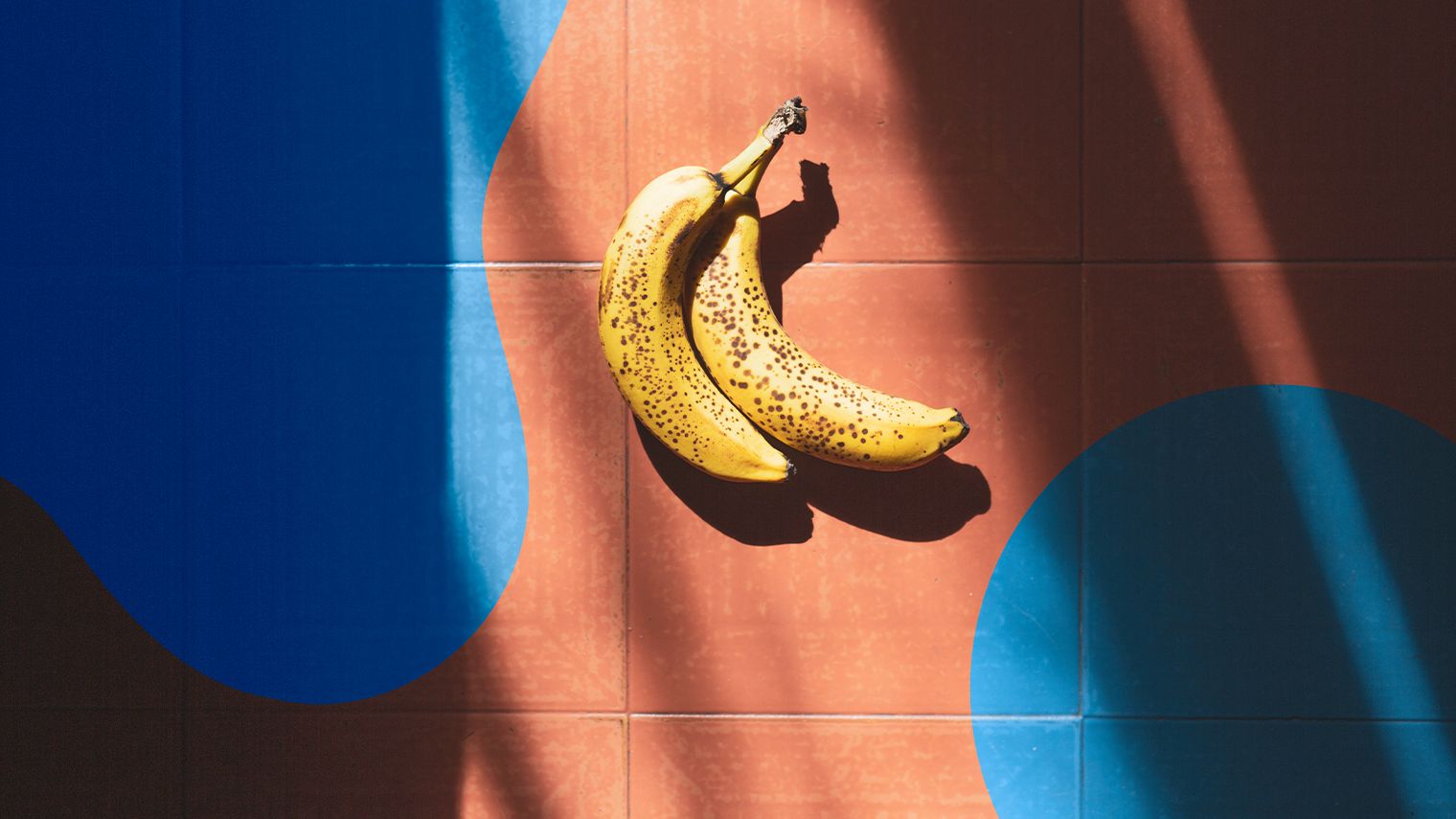Are Bananas Good for Type 2 Diabetes?
June 27, 2024
Content created for the Bezzy community and sponsored by our partners. Learn More

Photography by Alessandra Desole/Stocksy United
Bananas are popular because they’re convenient, flavorful, and nutritious. Here’s how you can enjoy them while living with diabetes.
With a few modifications, people with type 2 diabetes can include bananas in a balanced diet.
Since bananas are high in carbohydrates, it’s best to pair them with a source of protein (like plain Greek yogurt) or fat (like peanut butter) to decrease their impact on blood sugar.
So are bananas good for diabetes? It’s complicated and depends on when and what you eat them with. Here are some tips for including bananas in your diet and answers to frequently asked questions about bananas and diabetes.


Bananas and diabetes
Bananas are rich in carbohydrates — one medium-sized banana contains about 27 grams of carbohydrates — which can raise blood sugar levels.
While bananas are higher in carbohydrates than some other fruits, they also contain fiber and resistant starch (especially green bananas), which slow down digestion and reduce blood sugar spikes.
But despite their fiber and resistant starch content, eating too many bananas or eating them without pairing them with a protein or fat source can lead to blood sugar spikes. Eating bananas with other sources of carbohydrates (such as a fruit smoothie or a banana sundae) can also lead to blood sugar spikes due to the high carbohydrate content of the meal as a whole.
Understanding portion control, food pairings, and the glycemic index (GI) is key to enjoying bananas as part of a diabetes diet.
The GI ranks foods based on how quickly they raise your blood sugar levels. Scores range from 0 to 100 with the following groupings:
- Low GI: 55 or less
- Medium GI: 56 to 69
- High GI: 70 to 100
Research from 2022 suggests that eating low GI foods may be beneficial for people with type 2 diabetes.
The GI of bananas can vary significantly depending on ripeness. For example, while an unripe banana has a GI of 48, which is considered low, a ripe banana can have a GI of up to 75, which is high on the GI scale.
While we often think of bananas in relation to their carbohydrate content, bananas are rich in nutrients, including potassium, vitamin B6, and vitamin C. This makes them a healthy addition to any diet.
Tips for eating bananas
You don’t need to forgo bananas if you have type 2 diabetes. Here are some practical tips for enjoying bananas on a diabetes diet:
- Portion size: Stick to small or medium-sized bananas to manage your carbohydrate intake.
- Pair with protein or fat: Eating bananas with a source of protein or fat (such as peanut butter, plain Greek yogurt, or nuts) slows down sugar absorption.
- Choose green bananas: Green bananas have a lower GI than ripe bananas, lessening their impact on your blood sugar levels.
- Choose fresh bananas: Dried bananas or banana chips are common snack foods, but they often contain added sugars which can raise blood sugar further.
- Alternate with other fruits: A balanced diet needs variety. Try varying your daily fruit choices to include berries, apples, and pears, which have lower GI values.
- Monitor blood sugar: Check your blood sugar levels before and after eating bananas to understand their impact on your body. Every person is different, and the effect bananas have on blood sugar can vary between people.
FAQs
Are green bananas better than ripe ones for diabetes?
Green bananas have a lower GI, which means they will have less of an impact on blood sugar levels compared to ripe bananas. Green bananas also contain resistant starch, which slows down digestion and can reduce the impact of bananas on blood sugar levels.
How can I safely include bananas in my diabetes meal plan?
To reduce bananas’ effects on blood sugar levels, pair them with a source of protein or fat (such as peanut butter, plain Greek yogurt, or nuts). It’s also important to be mindful of portion size and ripeness.
Ripe bananas will raise your blood sugar levels more than unripe bananas due to their higher glycemic index. Larger bananas contain more carbohydrates and will raise your blood sugar more than small bananas.
What is the best portion size for a banana for someone with diabetes?
A medium-sized banana contains about 27 grams of carbohydrates, which is a good amount for a snack.
Can bananas cause blood sugar spikes?
Bananas can cause blood sugar spikes if eaten in large quantities, combined with other high carbohydrate foods, or eaten without a source of protein or fat.
Takeaway
Bananas are a nutrient-dense fruit that can be enjoyed as part of a healthy diet for people with type 2 diabetes. The important part is to eat them in moderation and pair them with other nutritious foods like plain Greek yogurt or nuts.
Understanding portion sizes, considering the ripeness of the banana, and balancing it with proteins and fats can help effectively manage your blood sugar levels while including bananas in your diet.
Medically reviewed on June 27, 2024
4 Sources


Like the story? React, bookmark, or share below:
Have thoughts or suggestions about this article? Email us at article-feedback@bezzy.com.
About the author